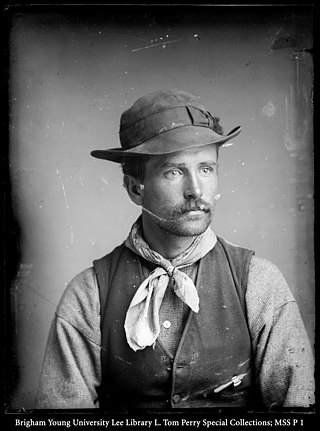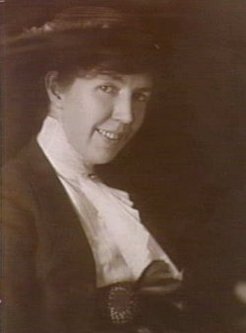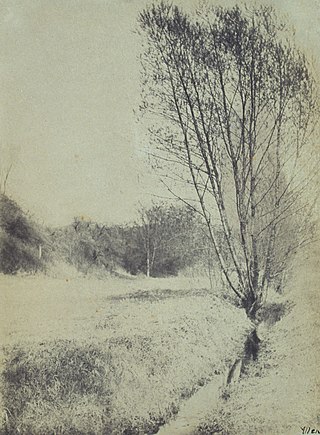The Howes Brothers were early entrants into the world of commercial photography who enjoyed a vibrant career in the years after the American Civil War.
Growing up in Ashfield, Massachusetts, the oldest brother, Alvah, born 1853, was the first to take up photography sometime in the mid-1880s after time spent as a farm laborer. He brought his brother Walter into the profession and together they began taking and selling photographs in southern New England and the Hudson Valley. In 1888 they set up a studio in Turners Falls, Massachusetts, and occasionally employed their youngest sibling, George.
In the summers, Walter and George toured, settling in a town for a week or more, taking photographs and selling the prints at three for a dollar. Alvah, on the other hand, ran the Turners Falls studio, staying there until 1894 when his business collapsed, a victim of the Depression of 1893. In 1896 Alvah returned to photography and joined his brothers on the road.
They took pictures across New England, particularly in Massachusetts, Connecticut and Rhode Island. They specialized in selling affordable, easily produced photographs, creating a record of the lives of ordinary people, many of whom would never have had a formal studio photograph taken. By 1902 the brothers decided to end their touring life.
The last photographs known by Alvah were in 1906 or 1907; he died in Ashfield in 1919. Walter and George moved to other business ventures. George died in 1925, and Walter in 1945. The Howes brothers took more than 20,000 images, many of which were restored in a conservation effort in the early 1980s. That archive rests at the Historical Society in Ashfield, Massachusetts.
Reproductions of it are on microfilm at the University of Massachusetts–Amherst and at the Greenfield Public Library in Greenfield, MA. Edited by Alan Newman, "New England Reflections, 1882–1907: Photographs by the Howes Brothers" (Pantheon Books, 1981), is the book that describes the Howes brothers' life and work.

Ashfield is a town in Franklin County, Massachusetts, United States. The population was 1,695 at the 2020 census. It is part of the Springfield, Massachusetts Metropolitan Statistical Area.

Deerfield is a town in Franklin County, Massachusetts, United States. Settled near the Connecticut River in the 17th century during the colonial era, the population was 5,090 as of the 2020 census. Deerfield is part of the Springfield, Massachusetts Metropolitan Statistical Area in western Massachusetts, lying 30 miles (48 km) north of the city of Springfield.

Montague is a town in Franklin County, Massachusetts, United States. The population was 8,580 at the 2020 census. It is part of the Springfield, Massachusetts metropolitan statistical area.

Turners Falls is an unincorporated village and census-designated place in the town of Montague in Franklin County, Massachusetts, United States. The population was 4,512 at the 2020 census. It is part of the Springfield, Massachusetts Metropolitan Statistical Area. Its name is sometimes used as a metonym for the entire town of Montague, for which it is the business district and comprises more than half the population.

The Pioneer Valley is the colloquial and promotional name for the portion of the Connecticut River Valley that is in Massachusetts in the United States. It is generally taken to comprise the three counties of Hampden, Hampshire, and Franklin. The lower Pioneer Valley corresponds to the Springfield, Massachusetts metropolitan area, the region's urban center, and the seat of Hampden County. The upper Pioneer Valley region includes the smaller cities of Northampton and Greenfield, the county seats of Hampshire and Franklin counties, respectively.

The American Civil War was the most widely covered conflict of the 19th century. The images would provide posterity with a comprehensive visual record of the war and its leading figures, and make a powerful impression on the populace. Something not generally known by the public is the fact that roughly 70% of the war's documentary photography was captured by the twin lenses of a stereo camera. The American Civil War was the first war in history whose intimate reality would be brought home to the public, not only in newspaper depictions, album cards and cartes-de-visite, but in a popular new 3D format called a "stereograph," "stereocard" or "stereoview." Millions of these cards were produced and purchased by a public eager to experience the nature of warfare in a whole new way.

Francis Frith was an English photographer and businessman. Francis Frith & Co., the company he founded in 1860 with the initial goal of photographing every town and village in England, quickly became the largest photographic publishers in the world and eventually amassed a collection of 330,000 negatives covering over 7,000 population centres across Great Britain and Ireland.

Charles Roscoe Savage was a British-born landscape and portrait photographer most notable for his images of the American West. Savage converted to the Church of Jesus Christ of Latter-day Saints in his youth while living in England. He served a mission in Switzerland and eventually moved to the United States. In America he became interested in photography and began taking portraits for hire in the East. He traveled to Salt Lake City with his family and opened up his Art Bazar where he sold many of his photographs. Savage concentrated his photographic efforts primarily on family portraits, landscapes, and documentary views. He is best known for his 1869 photographs of the linking of the First transcontinental railroad at Promontory, Utah.

James Wallace Black, known professionally as J.W. Black, was an early American photographer whose career was marked by experimentation and innovation.

George Edward Anderson was an early American photographer known for his portraiture and documentary photographs of early historical sites of the Church of Jesus Christ of Latter-day Saints and Utah settlements.

Gertrude Käsebier was an American photographer. She was known for her images of motherhood, her portraits of Native Americans, and her promotion of photography as a career for women.

Walter Bentley Woodbury was an inventor and pioneering English photographer. He was an early photographer in Australia and the Dutch East Indies. He also patented numerous inventions relating to various aspects of photography, his best-known innovation being the woodburytype photomechanical process.

Francis Edgar Stanley, also known as F. E. Stanley, was an American businessman and was the co-founder, along with his twin brother Freelan Oscar Stanley, of the Stanley Motor Carriage Company which built the Stanley Steamer.

Alfred Henry Burton is a nineteenth-century New Zealand photographer.

Frank Jay Haynes, known as F. Jay or "the Professor" to almost all who knew him, was a professional photographer, publisher, and entrepreneur from Minnesota who played a major role in documenting through photographs the settlement and early history of the Northwestern United States. He became both the official photographer of the Northern Pacific Railway and of Yellowstone National Park as well as operating early transportation concessions in the park. His photographs were widely published in articles, journals, and books, and turned into stereographs and postcards in the late 19th and early 20th century.

Elmer Chickering (1857–1915) was a photographer specializing in portraits in Boston, Massachusetts, in the late 19th and early 20th centuries. He kept a studio on West Street, and photographed politicians, actors, athletes and other public figures such as Kyrle Bellew, John Philip Sousa, Sarah Winnemucca, Edmund Breese, and the Boston Americans.

Walter Ernest Stoneman was an English portrait photographer who is known for taking photographs for the National Portrait Gallery (NPG) in London.

May and Mina Moore were New Zealand-born photographers who made careers as professional photographers, first in Wellington, New Zealand, and later in Sydney and Melbourne, Australia. They are known for their Rembrandt-style portrait photography, and their subjects included famous artists, musicians, and writers of the era.

Milton Kent was a pioneer of industrial and aerial photography, a prize-winning airman and a champion sculler. Initially, Kent worked as a sports photographer but by the 1920s he had embraced aerial photography using a specially crafted oblique camera. Over the next 50 years, Kent used his camera to capture the opening of new blocks of land across Sydney, the construction of the harbour bridge and many other events up until his death in 1965.

Mary Electa Allen (1858–1941) was an American photographer and co-founder of the Deerfield Society of Blue and White Needlework. She worked alongside her sister as a photographer from 1885 until 1920 capturing the life and landscape of Old Deerfield, among other subjects and paid commissions.